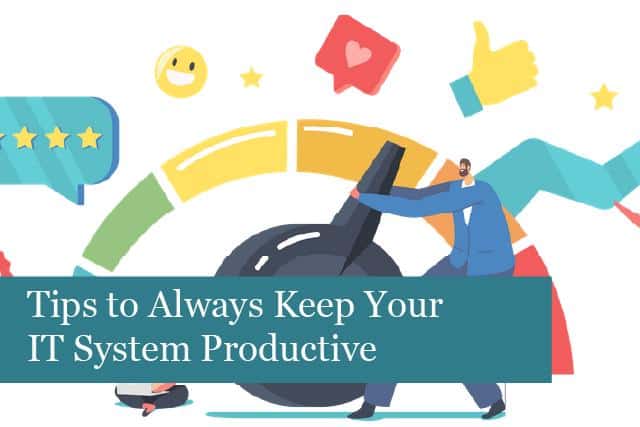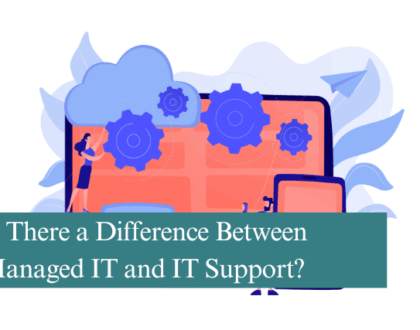
The productivity of IT systems directly impacts the overall efficiency and success of any organisation. Keeping these systems productive isn’t just about having the latest technology; it involves proactive management, regular maintenance, and strategic planning.
Here are essential tips to ensure your IT systems remain productive and robust.
Regular System Updates and Patching
Why It Matters: Outdated software and systems are prone to vulnerabilities, bugs, and performance issues. Regular updates and patches fix security holes, improve functionality, and enhance compatibility with other software.
Action Steps:
- Set up automatic updates for your operating systems, applications, and security software.
- Regularly check for and install patches released by software vendors.
- Schedule maintenance windows to minimise disruption when performing updates.
Implement Strong Cybersecurity Measures
Why It Matters: Cyber threats are a constant risk, and a security breach can cripple your IT systems, leading to data loss and downtime.
Action Steps:
- Use robust firewalls, anti-virus software, and intrusion detection systems.
- Regularly back up data to secure, offsite locations.
- Train employees on cybersecurity best practices, such as recognising phishing emails and using strong passwords.
- Employ multi-factor authentication (MFA) to add an extra layer of security.
Monitor System Performance Continuously
Why It Matters: Continuous monitoring helps detect potential issues before they escalate into significant problems, ensuring minimal downtime and optimal performance.
Action Steps:
- Use performance monitoring tools to keep an eye on key metrics such as CPU usage, memory usage, and network traffic.
- Set up alerts for unusual activities or performance degradation.
- Conduct regular audits and performance reviews to identify and rectify inefficiencies.
Invest in Reliable Hardware
Why It Matters: High-quality, reliable hardware reduces the risk of unexpected failures and enhances the overall efficiency of your IT systems.
Action Steps:
- Choose hardware that meets the specific needs of your organisation, considering factors like speed, storage, and compatibility.
- Regularly maintain and clean hardware to prolong its lifespan.
- Have a replacement plan for ageing equipment to avoid performance bottlenecks.
Optimise Your Network Infrastructure
Why It Matters: A well-optimised network ensures smooth communication and data flow, which is critical for productivity.
Action Steps:
- Regularly update network hardware, such as routers and switches.
- Optimise network configurations to reduce latency and improve speed.
- Use Quality of Service (QoS) settings to prioritise critical traffic.
- Implement network redundancy to ensure continuous operation during failures.
Develop a Disaster Recovery Plan
Why It Matters: Disasters, whether natural or man-made, can disrupt your IT systems significantly. A well-prepared disaster recovery plan ensures quick restoration of services.
Action Steps:
- Identify critical systems and data, and develop a strategy for their quick recovery.
- Regularly back up data and test your backup systems.
- Train your team on disaster recovery procedures.
- Periodically test and update your disaster recovery plan to address new threats and changes in your IT infrastructure.
Continuous Improvement
Why It Matters: IT systems and technology evolve rapidly. Encouraging continuous improvement helps your organisation stay ahead of the curve.
Action Steps:
- Encourage IT staff to stay updated with the latest trends and best practices through training and certifications.
- Solicit feedback from users to identify areas for improvement.
- Regularly review and refine IT processes and policies.
- Invest in research and development to explore new technologies and solutions.
Leverage Cloud Solutions
Why It Matters: Cloud solutions offer scalability, flexibility, and cost-effectiveness, enabling businesses to adapt quickly to changing needs and reduce the burden on on-premise IT infrastructure.
Action Steps:
- Identify business functions that can be moved to the cloud, such as email, data storage, and specific applications.
- Choose reputable cloud service providers with strong security measures.
- Regularly review and optimise your cloud usage to ensure it meets your business requirements efficiently.
- Implement hybrid solutions where necessary to balance on-premise and cloud resources.
Conclusion
Maintaining productive IT systems is essential for the smooth operation and success of any organisation. By implementing regular updates, strong cybersecurity measures, continuous monitoring, reliable hardware investments, network optimisation, disaster recovery planning, a culture of continuous improvement, you can ensure your IT systems remain efficient and resilient.
Is your organisation ready to boost its IT productivity? Contact us today to learn how our tailored IT solutions can help you achieve optimal performance and security for your systems. We provide a free IT reviews, these reviews cover areas such as security & reliability of your systems.
Recommended Posts

Is There a Difference Between Managed IT and IT Support?
13th June 2025


